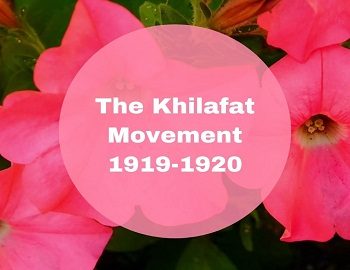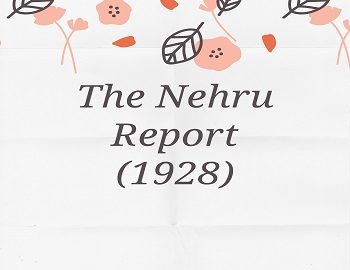Khilafat Movement:
- The Jallianwala Bagh massacre took place at a time when the Indian Muslims were extremely agitated over the pan-Islamic Khilafat issue, which originated as a result of Turkey’s entry into the First World War as an ally of Germany against Britain.
- The Sultan of Turkey, ruler of the vast Ottoman Empire, was the Caliph (or Khalifa) of the Islamic world.
- In the First World War, Turkey was defeated, Britain decided to weaken the position of Turkey and the Treaty of Sevres (August 10, 1920) was signed. The eastern part of the Turkish Empire such as Syria and Lebanon were mandated to France, while Palestine and Jordan became British protectorates. Thus the allied powers (England, France, USA, etc.) decided to end the caliphate.
- Accordingly, the Khilafat Movement was launched in September 1919 as an orthodox communal movement to protect the Turkish Khalifa and save his empire from dismemberment by Great Britain and other European powers.
- In India, a Khilafat Committee was formed at Bombay by the Ali brothers– Maulana Mohammad Ali Jauhar and his elder brother Maulana Shaukat Ali. The other prominent members were Maulana Abul Kalam Azad, M.A. Ansari, Sheikh Shaukat Ali Siddiqui, and Syed Ataullah Shah Bukhari.
- Gandhi decided to extend support to the Khilafat Movement as this was to him an ‘opportunity of uniting the Hindus and Muslims’. October 17, 1919, was observed as Khilafat Day when the Hindus united with the Muslims in fasting and observed a hartal on that day.
- This Khilafat Movement grew in strength on account of the sympathy and support which the Muslims received from Mahatma Gandhi who was elected President of the All India Khilafat Conference in November 1919. The Amritsar session of the INC, held in December 1919, gave a great fillip to the Khilafat agitation.
- Mohammad Ali presented a charter of demand before the diplomats in Paris in March 1920. The demands were-
- The Sultan of Turkey’s position of Caliph should not be disturbed.
- The Muslim sacred places must be handed over to the Sultan and should be controlled by him.
- The Sultan must be left with sufficient territory to enable him to defend the Islamic faith.
- The Jazirat-ul-Arab (Arabia, Syria, Iraq Palestine) must remain under his sovereignty.
- The Central Khilafat Committee warned Chelmsford that unless the peace terms were revised Muslims would resort to non-cooperation from August 1, 1920 and would ask Hindus to join them. ‘The Khilafat movement from early 1919 until the inauguration of non-cooperation on August 1, 1920 was the context of Gandhi’s rapid emergence as an all-India political leader’. By participating in the Khilafat Movement Gandhi had tried to organize a mass movement of political protest.









Comments (No)